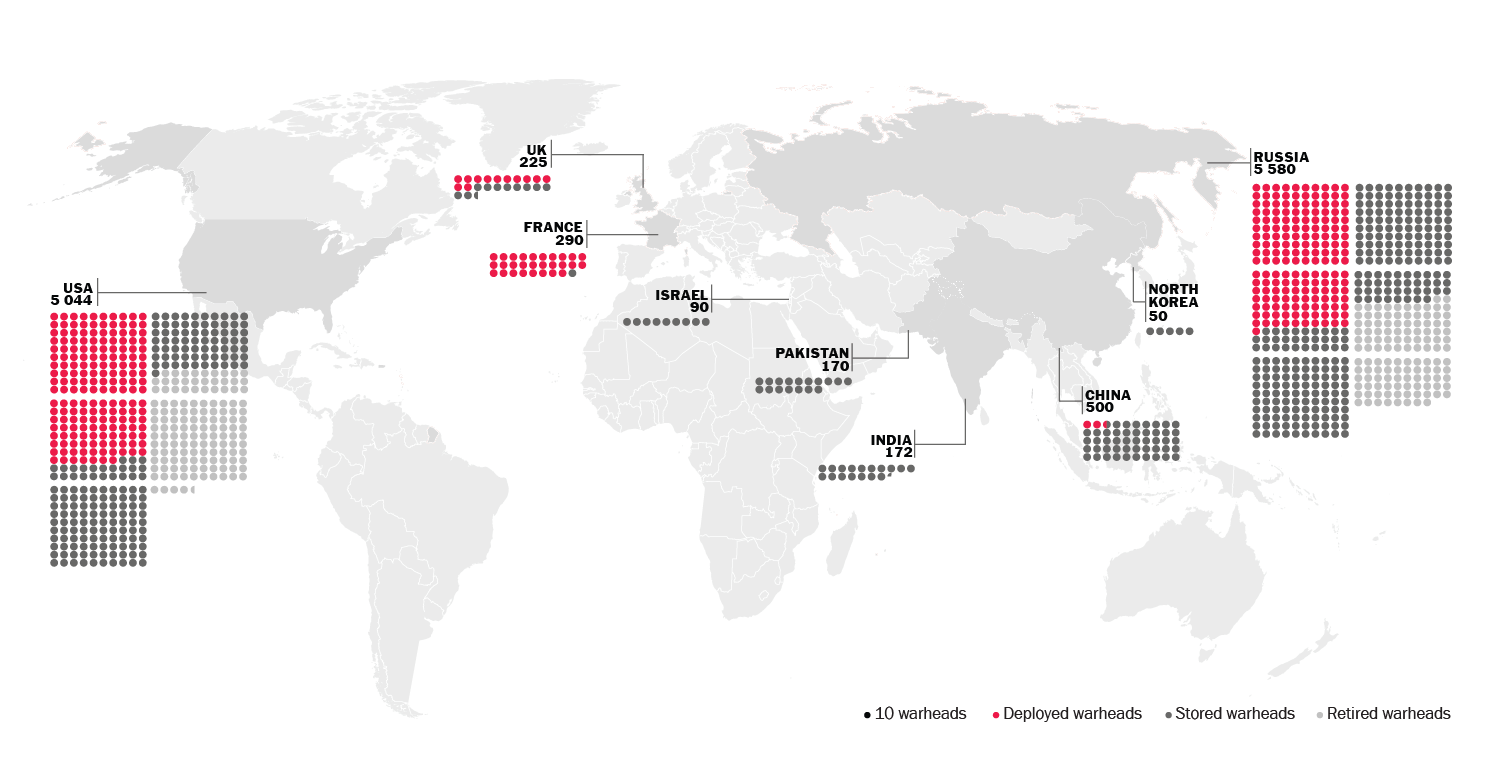Nuclear weapons have the potential to kill hundreds of millions of people directly. And due to the subsequent effects a nuclear winter would have on the climate and agriculture, billions more would be affected with starvation as global food supplies would radically diminish.
There are many historical examples of when the US or Russia came close to deliberately or accidentally firing their missiles, where chance or individuals’ who did not follow set procedures saved the world from a nuclear war. These “near misses” highlight the seriousness of nuclear security, especially considering that there are several current military conflicts where states with nuclear warheads are involved. At the same time, the historically biggest funder of anti-nuclear war programs, the MacArthur Foundation, stopped all their financial contributions in 2023, leading to a drop of funding by more than 30%.

Source: SIPRI
Ultimately, decisions around the deployment and use of nuclear weapons are in the hands of the nuclear-armed states: the US, the UK, France, Russia, China, India, Pakistan, Israel, and North Korea. Most plausible paths to reducing nuclear risk involve changing the actions of these countries and their allies. Some promising ways seem to be within the military of these states, through foreign policy organizations, in think tanks that contribute ideas on how we can reduce the risk of nuclear conflicts, or by increasing philanthropic donations in the area. Examples of more unconventional approaches include working independently to improve relations between key people in the nuclear powers or increasing the resilience of our food supply in the case of a nuclear winter.
Read more
Nuclear weapons – article by 80,000 Hours
Nuclear security cause area profile – article by EA Sweden
Nuclear weapons – article by Our World in Data
